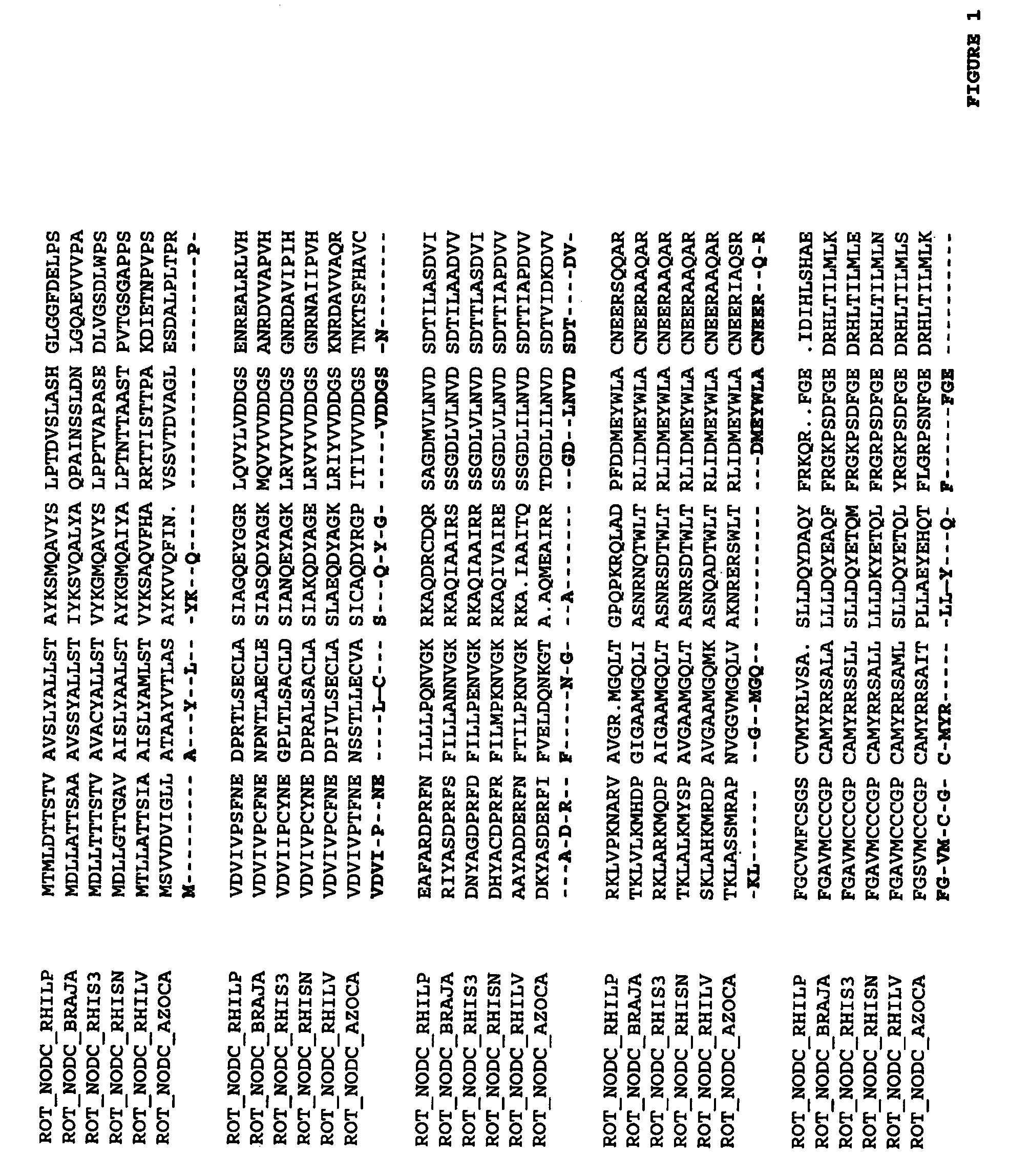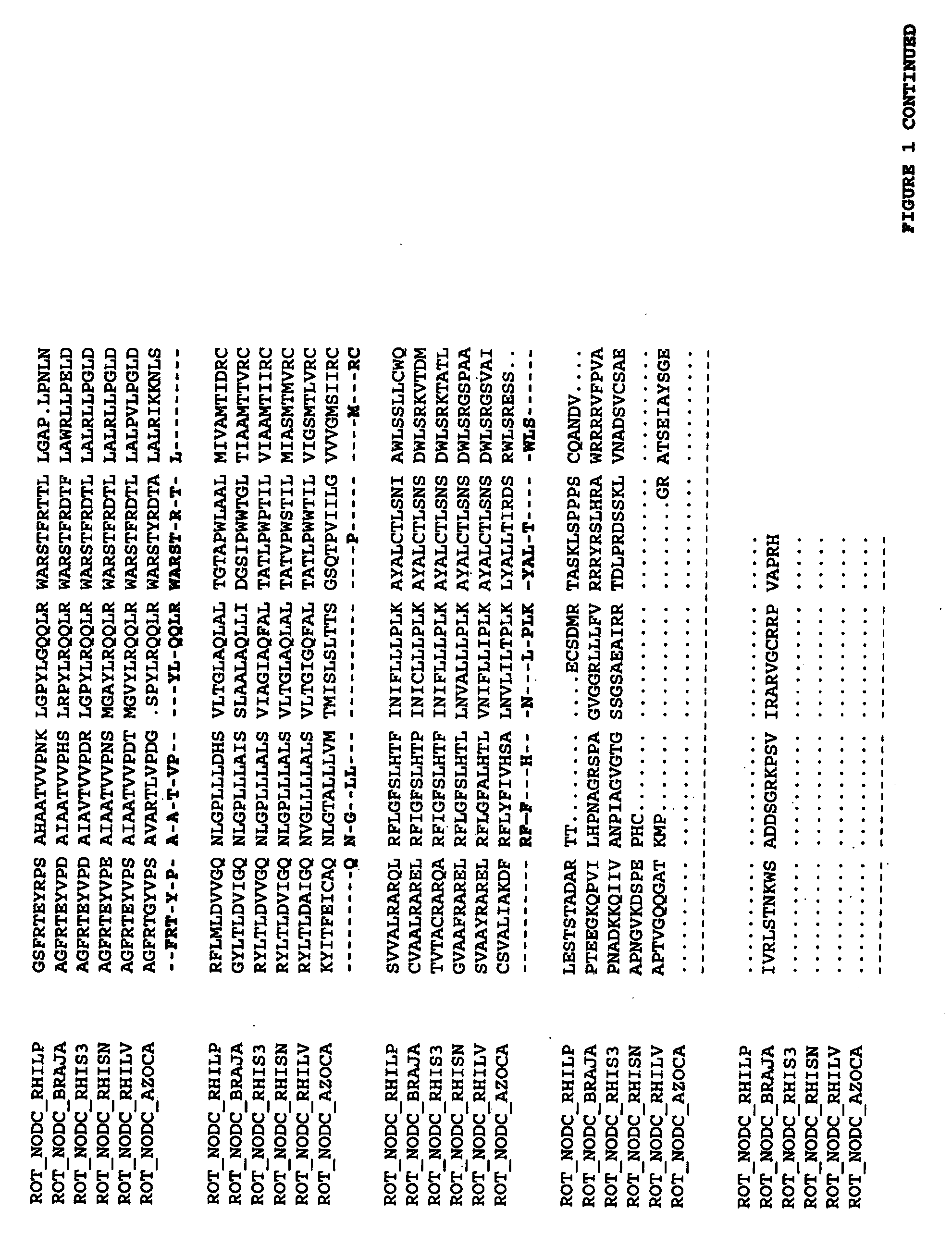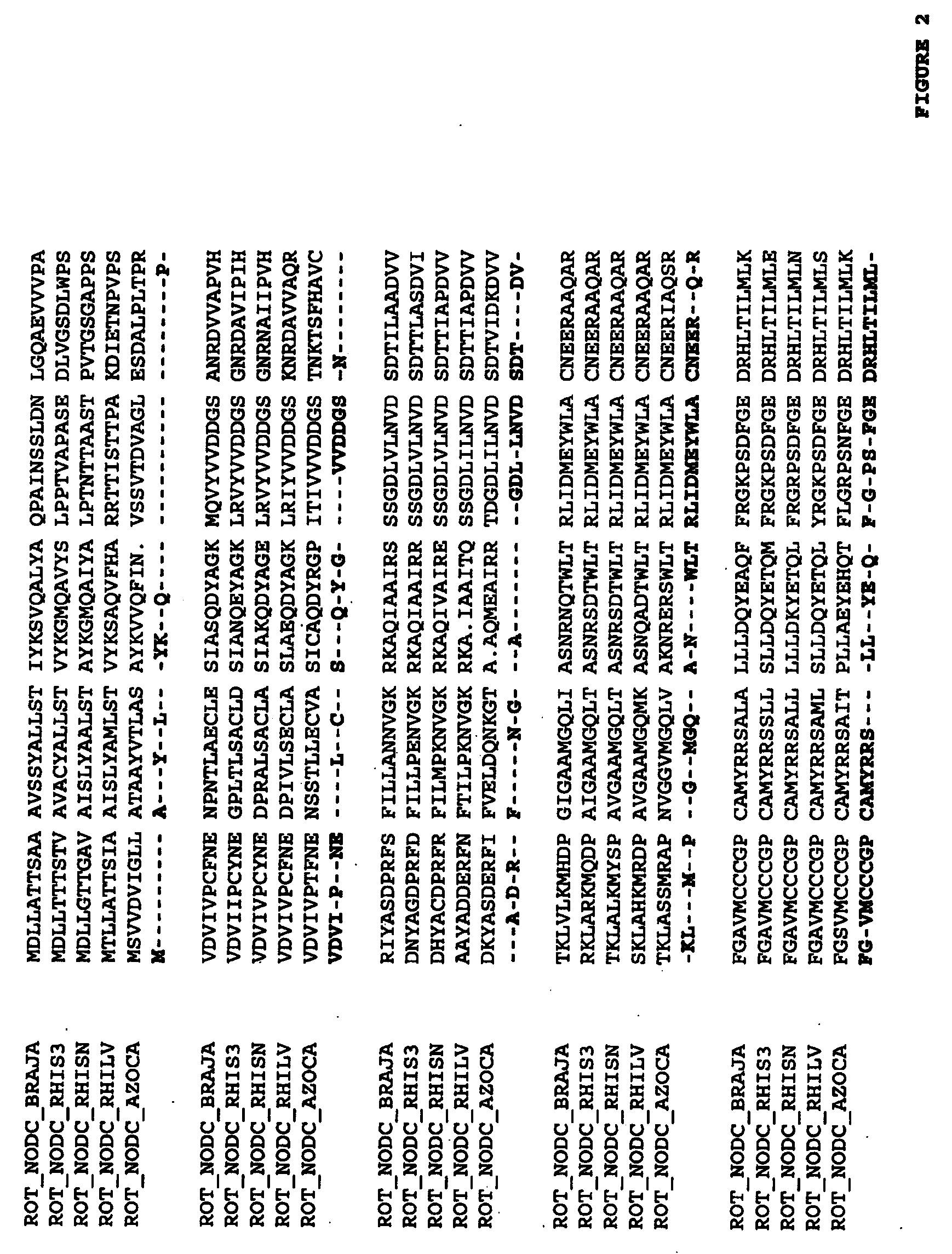Methods for Altering the Reactivity of Plant Cell Walls
a plant cell wall and reactivity technology, applied in the field of methods for altering can solve the problems of insufficient prior art methods, inability to withstand well washing, and inability to meet the chemical versatility of synthetic fibers, etc., to increase the amount of positively charged oligosaccharides, the effect of increasing the reactivity of plant cell walls
- Summary
- Abstract
- Description
- Claims
- Application Information
AI Technical Summary
Benefits of technology
Problems solved by technology
Method used
Image
Examples
example 1
Construction of Chimeric Plant-Expressible Genes Encoding a N-acetylglucosamine Transferase Protein
[0113]Using standard recombinant DNA techniques, a plant expressible NODC chimeric gene was constructed containing the following operably linked DNA fragments:[0114]a 35S promoter region from CaMV[0115]a DNA fragment coding for an untranslated leader sequence (5′Cab22L)[0116]a DNA fragment coding for NODC of Azorhizobium caulinodans [0117]a DNA fragment coding for EGFP (enhanced green fluorescent protein) cloned in frame with the NODC encoding ORF, such that a fusion protein is made comprising NODC and EGFP[0118]a transcription termination and polyadenylation signal from the 35S transcript of CaMV (3′ 35S)
[0119]The chimeric gene was introduced between T-DNA borders of a T-DNA vector together with a chimeric bar gene providing resistance to phosphinotricin. The resulting T-DNA vector was named pTGK44. The sequence of the T-DNA of this vector is provided in SEQ ID No 11. This T-DNA vecto...
example 2
Histochemical Analysis of the Hairy Root Cultures
[0143]Root hairs of the different hairy root cultures obtained by co-infection between A. rhizogenes and A. tumefaciens carrying the different T-DNA vectors described in Example 1 were histochemically stained to visualize different compounds of the cells, and analyzed microscopically.
[0144]The localization of NODC-EGFP fusion protein can be visualized using the green fluorescence of the GFP part. N-acetylglucosamine can be either detected after immunological reaction with IgM monoclonal antibodies to N-acetylglucosamine (BIODESIGN) or using Wheat Germ Agglutin-Alexa Fluor 488. The endoplasmatic reticulum was stained using ER-Tracker Blue White DPX dye. The Golgi apparatus was visualized using BODIPY-TR. Cell walls were stained using Calcofluor White (Fluorescent brightener 28). Nuclei were stained using Hoechst 33342.
[0145]The histochemically stained root hair cells were examined by means of fluorescence microscopy, using an Axioplan ...
example 3
Biochemical Demonstration of Chitin-Like Oligomers in the Cell Wall of Arabidopsis p35S::NODC Hairy Roots
[0167]Arabidopsis thaliana (Col-0) hairy roots transgenic for p35S:NODC-p35S:bar, obtained using T-DNA vector pTGK42 and control Arabidopsis thaliana (Col-0) hairy roots transgenic for p35S:bar obtained using pTC0192 (control) were analyzed for the presence of N-acetylglucosamine using the Morgan-Elson assay.
[0168]To this end, about 100 mg of hairy roots were harvested in about 20 μL buffer (25 mM K-phosphate buffer pH 6.0) and ground with seasand, precipitated and the protein content of the extract determined (for standardization purposes). The supernatants was removed and the roots were resuspended in 100 μL buffer. 1 Unit cellulase (Cellulase “Onozuka R-10” from Trichoderma viride (Serva, Cat No16419): 10 U / mL in buffer) or 1 Unit chitinase (Chitinase from Serratia marcescens (Sigma, Cat No C1650): 10 U / mL in buffer) or both were added to different samples and incubated for ov...
PUM
| Property | Measurement | Unit |
|---|---|---|
| concentration | aaaaa | aaaaa |
| time | aaaaa | aaaaa |
| pH | aaaaa | aaaaa |
Abstract
Description
Claims
Application Information
 Login to View More
Login to View More - R&D
- Intellectual Property
- Life Sciences
- Materials
- Tech Scout
- Unparalleled Data Quality
- Higher Quality Content
- 60% Fewer Hallucinations
Browse by: Latest US Patents, China's latest patents, Technical Efficacy Thesaurus, Application Domain, Technology Topic, Popular Technical Reports.
© 2025 PatSnap. All rights reserved.Legal|Privacy policy|Modern Slavery Act Transparency Statement|Sitemap|About US| Contact US: help@patsnap.com



